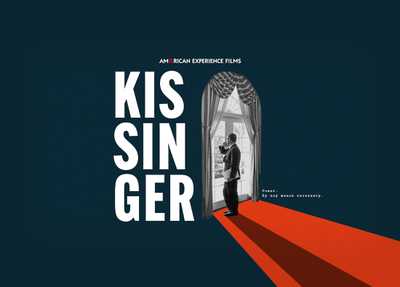The Harvard Medical College, where John Webster had his chemistry laboratory, opened its North Grove Street facility in 1846.
Professional medicine was different back then. Doctors did not know about germs or antiseptic practices, and patients died of causes that are simple to treat today. Yet practitioners did make significant advances in medicine at the time — including the first use of ether as a surgical anesthesia, a breakthrough first demonstrated next door to the Harvard labs, at Massachusetts General Hospital.
Examine mid-19th century instruments and specimens used for teaching, from the archives of the Massachusetts General Hospital and from the collections of the Countway Library of Medicine, Harvard Medical School.
-

Morton Ether Inhaler
Credit: Massachusetts General Hospital Archives and Special Collections
The first public demonstration of surgical anesthesia was performed by William Thomas Green Morton, a Boston dentist, on October 16, 1846. The inhaler seen here is one of several made according to Morton's specifications. A clever system of leather flaps allowed the patient to breathe in a mixture of air and ether fumes through the mouthpiece. -

Sponge and Metal Mesh
Morton Ether Inhalers soon proved impractical for use with children because of the size of the mouthpiece. Experiments in 1847 with a cone-shaped sponge saturated with ether demonstrated the effectiveness of this simpler technique, which became a common practice for the next 25 years. This is the first sponge used to administer ether in surgery.Anesthetists continued to try different approaches to giving ether to patients in preparation for surgery in the mid-nineteenth century. The cone-shaped mesh seen here was designed to hold a sponge or fabric soaked in ether. The mesh would have been inserted into a conical funnel through which the patient would breathe anesthetic fumes.
Credit: Massachusetts General Hospital Archives and Special Collections -

Surgical Kit
Credit: Massachusetts General Hospital Archives and Special Collections
Amputation was one of the most common operations performed in the mid-nineteenth century. This ebony-handled surgical kit was designed primarily for amputation. Large knives were used to slice through flesh until the bone was exposed and cut off with the saw. The kit also includes a tourniquet and a clamp. -

Jonathon Mason Warren's Surgical Kit
Credit: Massachusetts General Hospital Archives and Special Collections
Surgeons in the mid-nineteenth century often traveled to a patient's home, where a kitchen table would typically be used for the operation. Pocket-sized surgical kits would accompany the practitioner on such surgical house calls. This small kit (only six inches long) belonged to Jonathan Mason Warren, a visiting surgeon at the Massachusetts General Hospital from 1846 to 1867. -

George Hayward's Surgical Kit
Credit: Massachusetts General Hospital Archives and Special Collections
The traveling surgical kit seen here — less than eight inches long — belonged to George Hayward, a member of the Massachusetts General Hospital surgical staff from 1826 to 1851. Before Joseph Lister introduced antiseptic surgical practices in the 1860s, many surgical instruments had ivory or ebony handles. Later surgical instruments were usually made entirely of steel, which was more easily sterilized. -

Gigli Saw
Credit: Massachusetts General Hospital Archives and Special Collections
This saw — 16 inches long, with ornate ivory handles — would have been used by an orthopedic surgeon in the mid-nineteenth century to cut through bone. The flexible cutting portion of the saw is composed of chain links, sharp on one side and smooth on the other. The handles afforded a firm grip for the practitioner as the rocking motion of the chain executed a delicate cut. -

Lecture Tickets
Credit: Massachusetts General Hospital Archives and Special Collections
Professors at Harvard Medical School supplemented their salaries by selling tickets to their lectures. John Webster taught chemistry to Harvard undergraduates and to Harvard medical students. He enlisted janitor Ephraim Littlefield as his agent for the sale of tickets. -

Retractors
Credit: Massachusetts General Hospital Archives and Special Collections
This mid-nineteenth century steel retractor consists of three hooks attached by chains to a ring. Retractors were used to pull back sections of a wound or incision to allow a surgeon to see and do what needed to be done. This retractor could have been held during the procedure by an attendant, or attached to some fixed point. -

Skull Saw
Credit: Massachusetts General Hospital Archives and Special Collections
This mid-nineteenth century skull saw, also known as a Hey saw, would have been used in surgical procedures related to head injuries. The double-edged saw blade is straight on one side and gently contoured on the other. The blade, fixed on a brass shank, is mounted in a wooden handle. -

Dental Casts of Dr. George Parkman, 1846
This plaster inferior jaw cast and wax mold were part of the forensic evidence used during the murder trial of Dr. John White Webster in 1850. Dr. George Parkman, a noted Boston physician and Harvard benefactor, disappeared on November 23, 1849, and a subsequent search of the premises of Harvard Medical School revealed parts of a human body — including artificial teeth — in the laboratory of Dr. Webster, Harvard's Erving Professor of Chemistry.Dr. Nathan Cooley Keep, who had fitted Parkman with dentures several years earlier, was called as a trial witness and stated, "The teeth were brought to me, and I at once recognized them as the teeth which I had made for Dr. Parkman and with which I had taken so much pains... There could be no mistake about them."
John White Webster was convicted of the murder and executed on August 30, 1850.
Credit: Harvard Medical Library in the Francis A. Countway Library of Medicine -

Dry Specimen Preparation of Arteries of Head and Neck
A desire for anatomic teaching models developed due to problems of the preservation of specimens, a shortage of cadavers, and public objection to human dissections.The art of wax injection began in 1672 with the published descriptions of the technique by anatomist Jan Swammerdam (1637-1680). He melted wax in different colors, quickly filled a syringe, and injected the wax into the vein or artery of a dissection. Once the wax cooled, a cast of the vessels formed, and the surrounding tissue was carefully dissected, providing the medical student with an excellent concept of the vascular system. A coating of resin was applied to protect and seal the specimen. A sugar resin was sometimes used, so that models like this one exude a sweet odor. The preparation techniques used to create the model were well established by the close of the 18th century.
No. 301. Donated by Dr. Oliver Wendell Holmes and prepared by Dr. Hodges. 1850.
Credit: Warren Anatomical Museum, Francis A. Countway Library of Medicine -

Fetus with Removable Internal Organs
Louis Auzoux, a French physician, began making anatomical models out of papier-mâché at the age of 19. His attention was drawn to the quality of materials used in making toy puppets sold on the streets of Paris. He succeeded in compounding a paper paste that could be molded and shaped when wet, but became light and unbreakable when dried. In 1822, he obtained his medical degree and presented his first model to the Paris Academy of Medicine, receiving high praise and launching his career as an anatomical model maker. By the time of his death, he had perfected his techniques and created a wide range of models for teaching anatomy.Auzoux models are anatomically detailed, accurately labeled, and painted. Lightweight and durable, the models may be taken apart and reassembled. They made the study of anatomy easier for medical students of Auzoux's time.
Auzoux Papier-Mâché Model, 1850.
Credit: Warren Anatomical Museum, Francis A. Countway Library of Medicine -

Early Stethoscopes — Monaural and Binaural
Monaural Stethoscope, Cedar and ivory, ca. 1850s (left)
This monaural stethoscope is a solid wooden cylinder with a drilled center that could be unscrewed for carrying in the pocket. At one end, a chest piece auscultated the heart and when removed, the large opening was for listening to the lungs. By the 1850s, the monaural stethoscope was a mainstay of the physical examination.In 1816, Dr. Rene Laennec, an expert in chest diseases, was examining a young woman with heart problems. Painfully shy, he could not bring himself to press his ear to her chest, the only known method of auscultation. Remembering (a law of physics) a childhood trick of scratching the end of a log with a pin, a sound that would be transmitted loud and clear to the other end of the log, he made a "log" by rolling sheets of paper into a cylinder. Laennec recalled applying one end of it to the region of the heart and the other to his ear, and was surprised to find that he could perceive the action of the heart in a manner much more clear and distinct. This led to the intervention of Laennec's monaural stethoscope in 1819. On the basis of his knowledge of normal and abnormal breath sounds, Laennec could diagnose bronchitis, pneumonia, and most importantly, tuberculosis, a prevalent disease that claimed many lives at the time. Ironically, Laennec himself died of tuberculosis in 1826.
Cammann's Binaural Stethoscope, ca. 1852 (right)
Credit: Warren Anatomical Museum, Francis A. Countway Library of Medicine
The monaural stethoscope became obsolete by the 1860s with the invention of George Cammann's binaural stethoscope in 1852. The instrument is a monaural, bell-shaped chest piece with two long air conduction tubes that provided an increase of sound simultaneously in both ears. This original 1852 Cammann binaural stethoscope's ear knobs are made of ivory, and the bell chest a piece of ebony. It is inscribed with both Cammann's and Bowditch's names. -

Dr. John White Webster's Crucible
Credit: Warren Anatomical Museum, Francis A. Countway Library of Medicine
This crucible is one of the few extant objects known to have been used by Dr. John White Webster, Harvard's Erving Professor of Chemistry, in his laboratory. -

Dr. John Collins Warren's Medical Kit, 1840
Dr. John Collins Warren, the son of renowned surgeon John Warren, taught at Harvard from 1809 to 1847, served as the first dean of the medical school, and helped found Massachusetts General Hospital. Himself a leading surgeon of the day, Dr. Warren performed the first public demonstration of surgery on a patient anesthetized with ether provided by a Boston dentist, W. T. G. Morton.Dr. Warren used this portable medicine kit, encased in red leather, containing surgical instruments and powdered medicines. His card, which was found in the kit, lists the address of his home at No. 2 Park Street in Boston.
Dr. Warren donated his collection of anatomical and pathological specimens to Harvard, where it formed the basis of the Warren Anatomical Museum, now located at the Countway Library of Medicine, Harvard Medical School.
Credit: Warren Anatomical Museum, Francis A. Countway Library of Medicine








